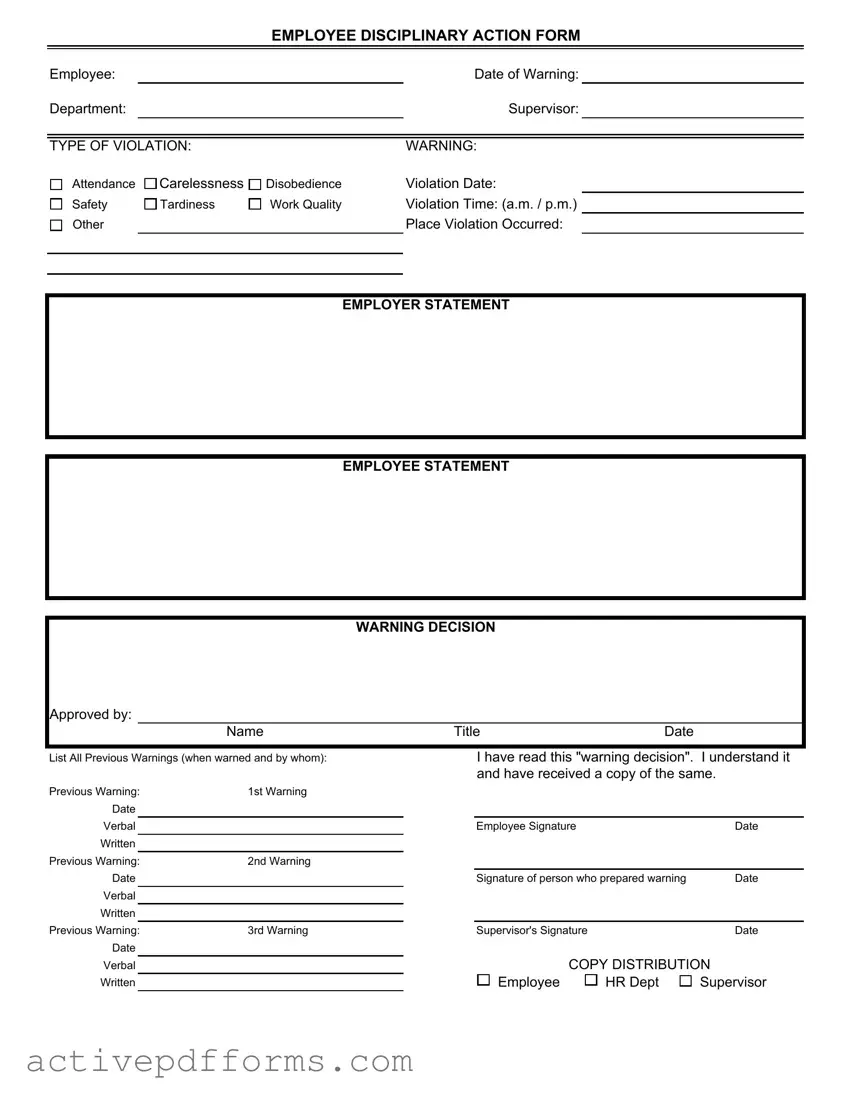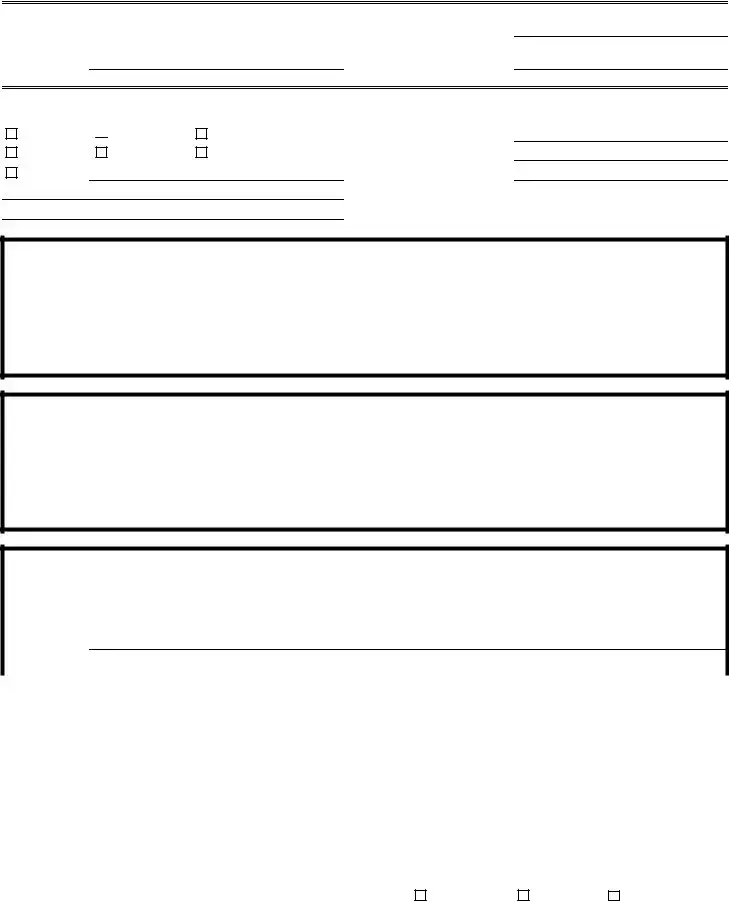When it comes to maintaining order and professionalism within a workplace, the Disciplinary Action form plays a crucial role. This document is not merely a piece of paper but a structured way for managers to communicate with employees about their violations, be it related to attendance, carelessness, safety, tardiness, or other aspects of their work performance. As straightforward as it seems, the form is comprehensive, detailing not only the type of violation but also the date, time, and place where the misconduct occurred. It also provides spaces for both employer and employee statements, ensuring that both parties have the opportunity to share their side of the story. Importantly, the warning decision section, which needs to be approved by an authority figure, outlines the seriousness of the matter. Additionally, the form keeps track of previous warnings, making it easier to understand the employee's history of conduct within the organization. Both the employee and the responsible supervisor sign this form, guaranteeing its acknowledgment. Lastly, it also mentions the distribution of the form copies, ensuring that all relevant parties, including HR departments, are informed. This systematic approach not only aids in addressing issues promptly but also in documenting them for future reference, reinforcing the importance of adhering to workplace rules and regulations.


 Carelessness
Carelessness